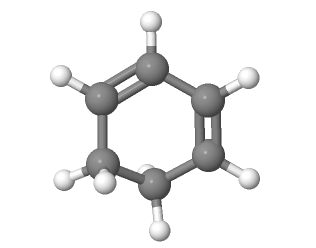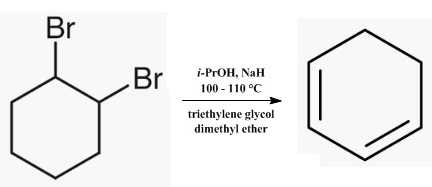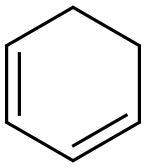Description
1,3-Cyclohexadiene is an organic compound with the formula (C2H4)(CH)4. It is a colorless, flammable liquid. It is a useful diene for proteomics research.
Uses
1,3-Cyclohexadiene is used as a hydrogen donor in transfer hydrogenation. It is used in the conversion to benzene. It is useful in the study of proteomics research.

Reactions
1,3-Cyclohexadiene can undergo:
- C-C coupling with aromatic alcohols via iridium-catalyzed hydrogen auto-transfer and with aldehydes via transfer hydrogenation mediated by isopropanol to form carbonyl addition products.
- Living anionic polymerization with n-BuLi/TMEDA system to form polycyclohexadiene.
- Platinum-catalyzed silaboration to form (1R,4S)-1-(dimethylphenylsilyl)-4-(4,4,5,5-tetramethyl-1,3,2-dioxaborolan-2-yl)-2-cyclohexene.
- Aerobic palladium-catalyzed 1,4-diacetoxylation in the presence of cobalt tetra(hydroquinone)porphyrin as an electron transfer reagent.
Definition
ChEBI: Cyclohexa-1,3-diene is a cyclohexadiene.
Preparation
1,3-Cyclohexadiene has been prepared by dehydration of cyclohexen-3-ol, by pyrolysis at 540° of the diacetate of cyclohexane-1,2-diol, by dehydrobromination with quinoline of 3-bromocyclohexene, by treating the ethyl ether of cyclohexen-3-ol with potassium bisulfate, by heating cyclohexene oxide with phthalic anhydride, by treating cyclohexane-1,2-diol with concentrated sulfuric acid, by treatment of 1,2-dibromocyclohexane with tributylamine, with sodium hydroxide in ethylene glycol, and with quinoline, and by treatment of 3,6-dibromo-cyclohexene with sodium.

Purification Methods
Distil the diene from NaBH4 or Na under N2 and collect it in a trap cooled in Dry Ice. It is highly flammable. [Marvel & Martell, J Am Chem Soc 81 450 1959, Beilstein 5 IV 382.]







